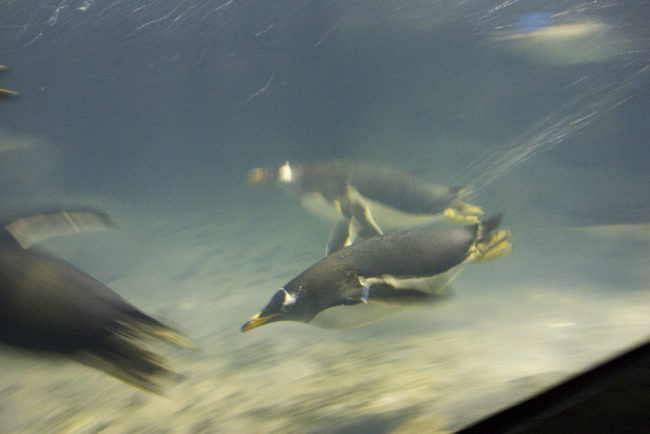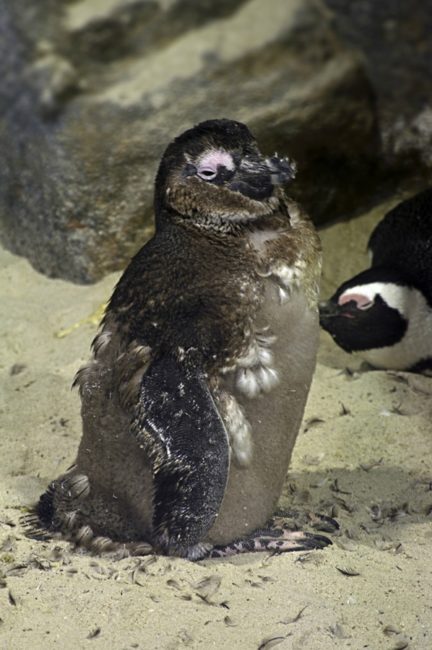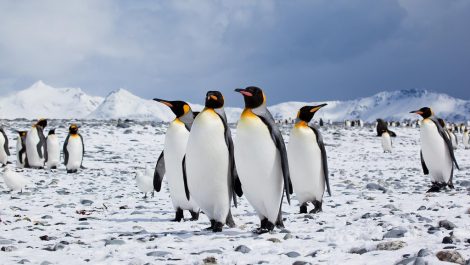What Do Penguins Look Like?
Penguins are the most adorable birds on earth. They cannot fly, unlike other birds. Penguins have a distinct appearance and physique which make them a spectacular species of wildlife. Penguin’s head is similar to other birds, whereas it has a short neck and an elongated body with wedge-like feet.
The Shape of Penguins:
The shape of the penguins is similar to a torpedo. The upper part of the body is narrow following the bulky cylindrical body and short legs. Another interesting shape of the penguins is that they are quite similar to the bowling pins. The bowling pins with snowman and penguin’s images on them are interestingly looking alike to penguins.
Because of their shape, penguins waddle on the land. They are built nearly to fly in the water than in the sky. The reason why they spend 75% of their lives in the water is that of their ability to swim rapidly and reach the food. Penguin’s body is built in such an efficient way that they can swim in the water about 15 miles per hour seamlessly.

Appearance of Penguins:
Tuxedo can be a right comparison with the beauty and the black and white combination of the penguins. The appearance of penguins with all its elegance seems to be like they have worn a royal tuxedo because of its white front and black back. The colonies of penguins serve as a wonderful treat to the eyes of the spectators.
The tuxedo looks are similar to all the species of penguins with some exceptional natural art on few species. The cuteness of the penguins is with its black and white suit and cuddly shape.
Penguin’s black and white tuxedo works as camouflage to protect themselves from the ocean predators like sea lions, orcas, leopard seals etc.
The white underside of the penguins appears to be like a skylight in the water rather than prey to the eyes of the predators. The upper part i.e. the dark body of the penguins would be similar to the dark ocean leaving the predator confused.
Beak:
Penguin’s beak is also called a bill, which is used to catch the food, preen their feathers and also used as a weapon during the fight. The size and the sharpness differ from species. Penguins have no teeth but they have pointed spiky spines inside the beak which are helpful in swallowing their prey. They have a small tongue that is not easily visible in because of its size.
Penguins can bite using their beak to defend themselves and their nest. They also use their wings along with their beak to fight with the opponent.
Ears:
Penguins do have ears. They don’t have external ears. Like other birds penguins’ ears are covered by feathers and not visible easily. The point on each side of the head plays an important feature in identifying the partner’s distinctive call amongst the large colony. The ears also help them be alert when they listen to the noise of the leopard seals and other sea predators.
Legs:
The penguin’s short legs are mainly used for waddling on land and while swimming. Penguins also have knees that are not evident when they walk or swim. They are enclosed within the body and thus give an optical illusion that there are no knees. If we keenly notice, we can find that the penguin’s legs are set back which leads to the upright position.
Every species of penguins has webbed feet and sharp claws. The webbed feet are much aiding for their sea life. Emperor penguins that are on the ice stand on their heel, rather than resting their feet on the ice. They release less heat by doing this and also avoid direct contact with the ice.
Tail:
The short tail comprises stiff feathers. It supports the penguins on land or while climbing the cliffs.
Flippers:
The wings are formed into flippers. The flattened bones and joints form the flexible flat flippers suitable for swimming.
Size of the Penguins:
Height and weight of the penguins vary with the species. The emperor penguins are the tallest and the heaviest of all penguins. They can weigh approximately 41kg and 3.7 feet tall. The little penguins or the fairy penguins are the smallest of all the penguins and stands 41 to 45 cm tall and weighs about 1 kg.
Markings and Colorations:
Even though, the black and white colors of the body of the penguin species are the same, they have different markings and certainly added prettiness.
King penguins: They have a black head, black back and black throat with orange patches on the sides of the head. The orange coloration is also seen in the lower bill.
Emperor penguins: They have a black head, back and black throat with yellow patches on the sides of the head.
Adelie penguins: They have a black head and unique white rings around the eyes.
Chinstrap penguins: They have a black head and half white face with a black stripe below the chin.
Gentoo: Gentoo penguins have a black head and white eyelids with a white patch above each eye and also over the head.
Crested penguins like, rockhopper and macaroni have orange or yellow feathers crests over the eyes. Southern rockhopper has golden yellow feathers over the eyes.
Yellow-eyed penguins have yellow eyes and a pale yellow stripe from the eye to the back of the head.
Little penguins have a blue head and back with a white front.
Male and female penguins:
Normally, it is hard to distinguish the appearance of male and female penguins. But, male and female royal penguins and crested penguins are easy to identify and falls exception. The males of both the species have bigger bills when compared to the females.
Molting:
Most of the penguin species go through the molting stage. This phase is usually after the breeding season. Molting is wearing out the feathers. The feathers don’t fall out at once; it takes time to shed the old ones until the new feathers appear.

Penguins look shabby during this phase and they clear the old feathers by rubbing it on the land or other penguins.
Conclusion:
The blubber is the fat of the penguins’ body which is surprisingly more when compared to other flightless birds. It gives the Penguins a bulky and cuddly look. They can survive the cold conditions mainly because of the blubber and their hard feet.
The wide-ranging species of penguins and their appearance are always a delight to watch. Their toddling walk and efficient swimming and gliding depict their innocence and also proficiency.
References:
http://www.kidzone.ws/animals/penguins/facts1.htm
https://www.animalstown.com/animals/p/penguin/penguin.php
https://www.tooter4kids.com/Penguins/Questions_About_Penguins.htm
https://seaworld.org/en/animal-info/animal-infobooks/penguin/physical-characteristics
Image source:
- Penguin Torpedo by The Pug Father / CC BY
- Tuxedo looks of King Penguins by Antarctica Bound / CC BY
- Molting Penguin by Schristia / CC BY

